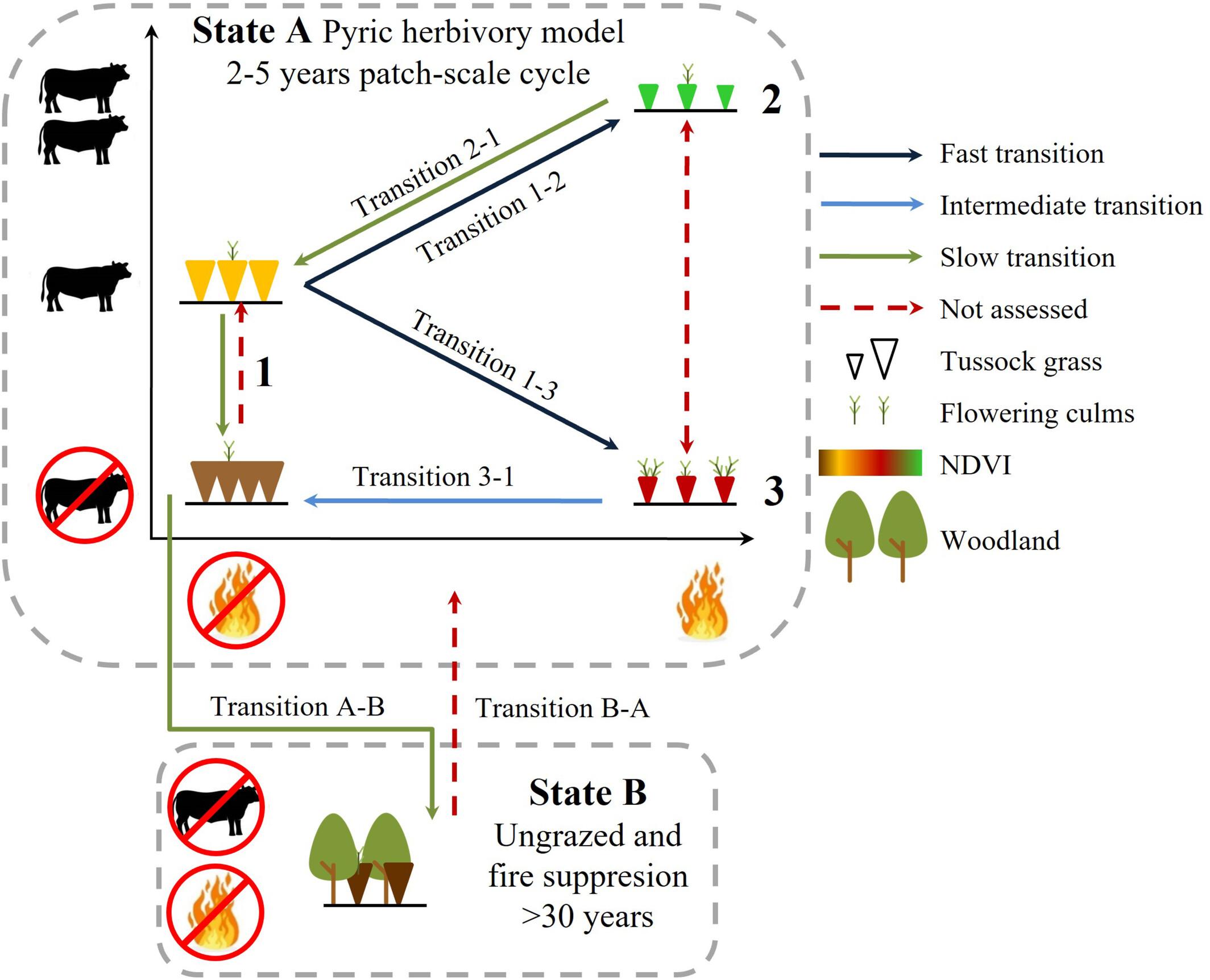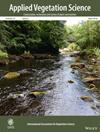Fire and grazing interaction in a subhumid grassland: Effects on a dominant tussock grass
Abstract
Questions
Herbivory and fire are the main disturbance drivers in open ecosystems. The aim of this study was to evaluate the effects of fire, cattle grazing, and their interaction on structural traits and the Normalized Difference Vegetation Index (NDVI) of the tussock grass Saccharum angustifolium, and its temporal dynamics in a subhumid grassland.
Location
Grasslands of the Eastern Hills, Uruguay.
Methods
We set three blocks (four plots of 300 m2 each) in a homogeneous grazed area dominated by S. angustifolium within a protected area. Each block presented the combinations that emerged from the two levels of cattle grazing (grazed/ungrazed) and burning (burned/unburned) factors. The experimental burning was carried out in the spring. Clump volume, number of flowering culms, NDVI of S. angustifolium, and soil variables were measured for 2 years.
Results
Burning efficiency (plant biomass burned of the total available) was 82%, burn intensity ranged from 178–610 kW m−1, and the soil temperature increased 40% compared with pre-fire measurements. The volume of S. angustifolium clumps decreased with fire, and the difference between burned–unburned plots decreased with time. The burned–ungrazed treatment increased the number of S. angustifolium flowering culms. NDVI of S. angustifolium clumps increased 50% with fire, and then decreased with time. Soil temperature was higher in burned treatments, and moisture was higher in unburned treatments on some dates. Bulk density, for the 0–5-cm depth, was 9% higher in burned than in unburned plots irrespective of grazing.
Conclusions
Our results provide new data in favor of the management practice carried out by ranchers in Uruguayan grasslands dominated by S. angustifolium. Our data complement the evidence that a fire–grazing interaction can maintain grasslands in different phases of a stable state. Our results constitute a useful contribution for the managers/authorities of the protected area, and can be extrapolated to other tussock grass-dominated grassland areas.


 求助内容:
求助内容: 应助结果提醒方式:
应助结果提醒方式:


